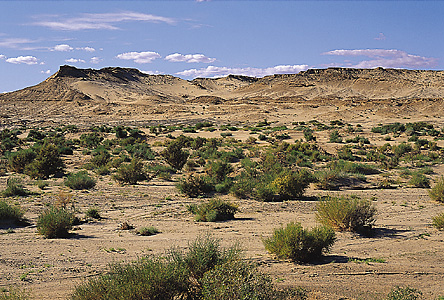Steppe, << stehp, >> is an area covered chiefly by short grasses. Steppes are found in dry areas that have hot summers and cold winters. Most steppes receive an average of from 10 to 20 inches (25 to 51 centimeters) of rain a year–less rain than on a prairie, but more than on a desert. In North America, steppes cover most of the Great Plains from northern New Mexico to southern Alberta. In Eurasia, they extend from southwestern Russia into central Asia.

Most steppe plants grow less than 1 foot (30 centimeters) high. They do not grow as dense as the tall grasses of prairies grow. Plants of the North American steppes include blue grama, buffalo grass, cactuses, sagebrush, and spear grass. Before people farmed the steppes, many bison, deer, jack rabbits, prairie dogs, pronghorns, hawks, and owls lived there.
Today, people use steppes to graze livestock and to grow wheat and other crops. Overgrazing, plowing, and excess salts left behind by irrigation waters have harmed some steppes. Strong winds may blow away loose soil after plowing, especially during a drought. A combination of plowing, winds, and drought has caused severe dust storms in the Great Plains region of the United States (see Dust Bowl ).

